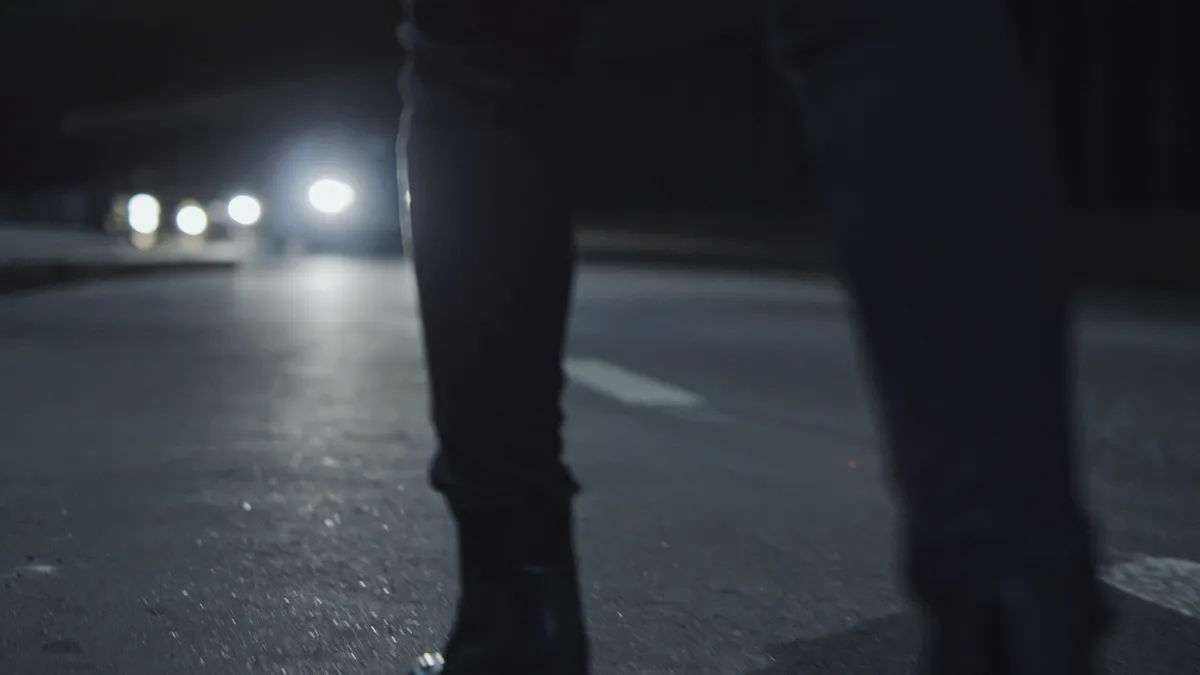Some automatic emergency braking systems, a standard feature in most new cars, performed poorly in identifying pedestrians at night during a recent test conducted by the Insurance Institute for Highway Safety. Just four of 23 vehicles tested earned the IIHS “superior” rating in results released Tuesday. Those vehicles avoided a collision with the pedestrian dummy crossing a road at two different vehicle speeds and with high beams and low beams. And in a daylight IIHS test, 19 of those 23 vehicles did well in identifying pedestrians.
Autobraking technology, which uses cameras, radar or lidar to detect a potential collision, has proven to be highly effective. In combination with forward collision warning technology, rear-end crashes were cut in half. However, current systems have limitations and in higher-speed situations may only be able to slow the vehicle down before impact.
The assessments come amid a spike in pedestrian deaths. The National Highway Traffic Safety Administration estimated that 7,342 pedestrians were killed in motor vehicle collisions in 2021, a 13% increase over the previous year. More than three-quarters of pedestrian fatalities in 2020 occurred after dark, according to Advocates for Highway and Auto Safety.
In the IIHS nighttime test, the ambient illumination surrounding the test track was similar to the amount of light cast by a full moon. In a video accompanying the IIHS report, the tests appeared to take place on a road that lacks streetlights. The IIHS only tests these AEB systems in daytime conditions and unlit conditions, according to IIHS spokesperson Joe Young.
“It’s logical to assume that a vehicle that performs well in total dark and daylight would perform well at night on a road with some light,” Young said in an email. “However, we can’t say whether a vehicle that came up short in the nighttime scenarios would perform better in the presence of streetlights.”
Advocates for Highway and Auto Safety President Cathy Chase said in an emailed statement that the IIHS test “demonstrates a clear need for NHTSA to advance a minimum performance standard” and that the rule “must also make sure bicyclists are detected.”
In March, NHTSA asked for comments on the appropriate timing to add bicyclist protection to updates for the agency’s New Car Assessment Program, but stated, “NHTSA believes that detecting cyclists is technically more challenging for vehicle AEB systems than detecting pedestrians since cyclists often move at higher speeds.”
More than 45 communities across the U.S. have committed to Vision Zero principles, which aim to reduce deaths and severe injuries among all road users. The Vision Zero Network has urged NHTSA to include people using bicycles and other micromobility devices in the NCAP update.
Automatic emergency braking has also been blamed for so-called “phantom braking,” in which a vehicle erroneously brakes. According to J.D. Power, shadows on the road, parked cars or metal road signs in the middle of a curve, and steep driveways can activate automatic braking.
Almost all new vehicles sold in the United States will have autobraking as standard equipment by Sept. 1 through a commitment by participating auto manufacturers. “Every family deserves a vehicle with a ‘superior’ safety rating for the best braking systems, and every road user deserves the protections afforded by this safety technology,” Chase said in the statement.











